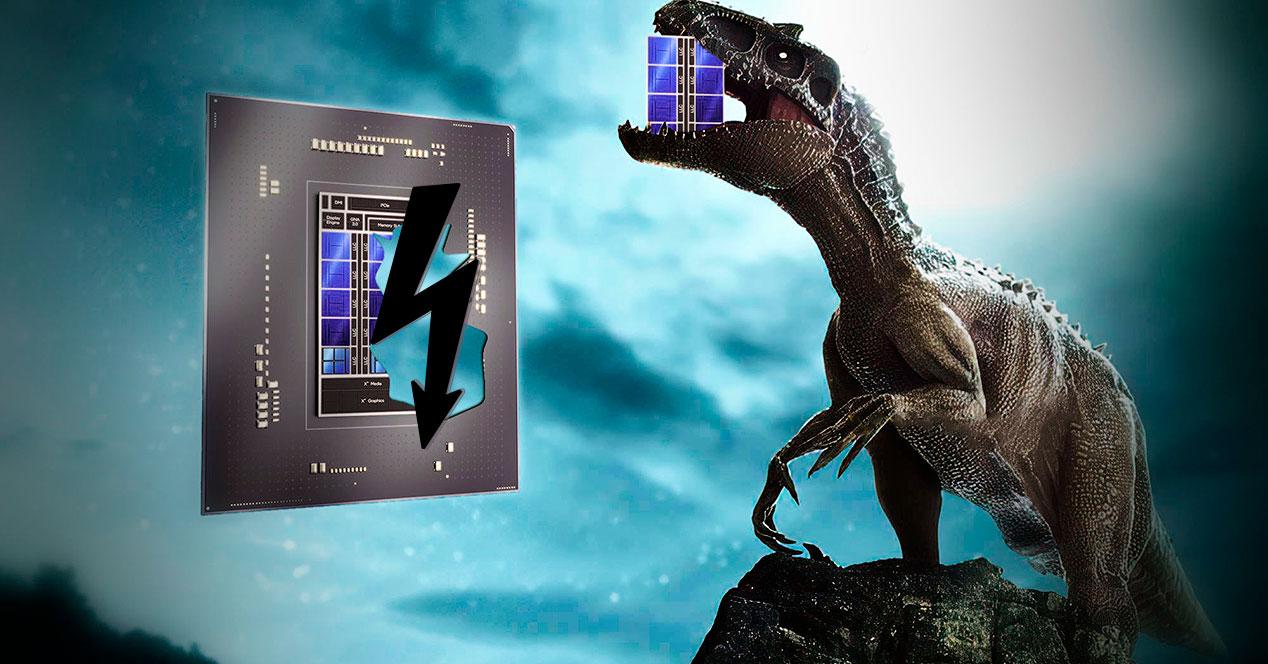Intel has already confirmed its next architectures and manufacturing nodes for 2025 and as we have seen it will hit the accelerator hard, with minor improvements yes, but at this rate there will be constant evolutions for consumption and performances. Alder Lake has been a bit of both, more on the performance side than the fuel side, so Raptor Lake will focus on efficiency. The latest rumors point to a 25% improvement in consumption, curiously bringing a feature already seen before and which they had to remove …
In this article, if anything is to be clear, it is that precisely the architecture of Raptor Lake will not be a node improvement to increase the density and clock frequencies a bit at the cost of an improvement in the efficiency. The leak reveals some key improvements that are going to make things really tough for AMD despite the massive arrival of 5nm from TSMC: DLVR.
Intel brings back the voltage controller in the CPU: DLVR
As it sounds, or at least that’s what is presented in the filtered slides. To remember this technology we must remember that only two architectures have obtained it: Haswell and Broadwell, both with success but curiously with criticism.
It is true that the pros outweighed the cons, but Intel didn’t get a bad press because of the 4000 series soldering nullity, which the 5000 and 6000 series HEDTs did not. IVF Handling all of the voltages on the processor meant an extra watt of heat generated for the processor, but in return it had much improved efficiency and nearly perfect control of all voltages, tackling every setting.
Well, it comes back in a more advanced way via a controller called the Digital Linear Voltage Regulator or DLVR and which has been seen in a series of Intel patents. The novelty here is that the system is different from Haswell’s and is much more interesting.
The on-board pilot is not exempt from
The basic idea behind Raptor Lake’s new power delivery architecture proposal is to include a digital linear voltage regulator (DLVR) as a voltage clamp placed in parallel with the main VR, thereby reducing the VID of the processor and thus reducing the power consumption of the processor core. pic.twitter.com/n7kwjwTY9C
– Underfox (@ Underfox3) August 19, 2021
The novelty as such is that in addition to being digital, apparently the voltage controller on the motherboard would not be removed, but DLVR is a second-access digital controller with a very clear goal: to reduce power consumption. energy by being a complement to very simple and basic processor.
Until now, voltage drivers are subject to changes in temperature, current, PCB layers, and power lines, so regulating them is really tricky if you want a fine and constant voltage, without jitter or peak. For this we use LLCs, but this triggers the consumption and temperature of the VRMs to end up sending voltage back through the board and directly to the CPU.
It’s not perfect, it’s not incredibly precise, but it’s effective. The DLVR which is now inside the chip can calibrate, regulate and provide the cores and the cache with protection against voltage coming from the board, improving the so-called dropout and reducing peak consumption by up to 25 % as the amperes consumed increase.
It is not linear and logically has a limit, which is calculated at 40 amps, which is the same, 480 watts on the 12V line. Hence the calibration and adjustment of the low power down to zero at 70 amps, numbers impossible for mortals and only professional overclockers will have.
The patents also show that DLVR it could lower the voltage to 160mV reaching 40 amps and from there it would lower said zeroing with 70A. This means that the reduction could be between a 20 or 25% compared to current conceptions of processor power, such a drop is currently unthinkable with undervoltage.
What do these data imply? Well, thanks to lower voltage, Intel has more thermal margin to increase the frequency and thus gain in performance, in particular, it is said that a decrease in 21% results in an increase in 7% yield. Therefore, Zen 4 will not have it easy in front of Raptor Lake if this is true.









